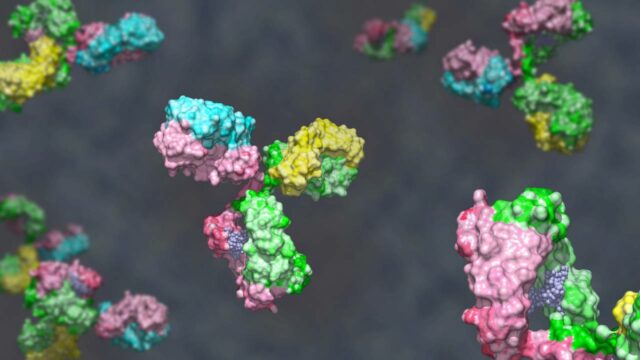
Clinical effects observed with Alligator’s 4-1BB agonist
Through its partnership with the US-based biotech Aptevo Therapeutics, Alligator Bioscience is evaluating the bispecific antibody ALG.APV-527 for the treatment of solid tumours in a phase I dose-escalation trial. The companies have announced positive interim results from the dose escalation part of the study, and BioStock spoke with Alligator’s CEO Søren Bregenholt to learn more.
Swedish biotech Alligator Bioscience develops tumour-directed antibodies. The company has had recent success with its lead candidate, mitazalimab, a CD40 agonist, reaching proof-of-concept in a phase II trial in first-line pancreatic cancer patients when combined with mFOLFIRINOX (standard-of-care chemotherapy for this group of patients).
Besides a confirmed objective response rate (ORR) of 40 per cent, which surpassed the threshold for meeting the primary endpoint set for this study, other key data points that stand out are 12.5 months duration of response (DoR), 7.7 months progression free survival (PFS), and 14.3 months overall survival (OS). These indicate a clear additional clinical benefit of mitazalimab compared to chemotherapy alone.
Now the company is gearing up for phase III with mitazalimab, with plans to initiate the trial in early 2025 with the help of a suitable partner. Read more here.
ALG.APV-527 – a bispecific antibody targeting 4-1BB
CD40 is not the only molecular target being explored by Alligator Bioscience. In fact, the company is also developing cancer immunotherapy candidates targeting 4-1BB – an immune system activator. Two clinical assets targeting 4-1BB are included in Alligator’s development pipeline: ATOR-1017, which has completed phase I, and ALG.APV-527 (“527”), currently undergoing phase I.
527 is a bispecific antibody with a tumour-binding part and an immunomodulatory part. The tumour-binding part of 527 targets the tumour-associated antigen 5T4, which is a protein expressed in several tumour types and aggressive tumour cells. Once the 5T4 protein is detected, then the immunomodulatory part of the molecule comes into play by recognising and activating 4-1BB. This then stimulates the immune cells involved in tumour control and kills the tumour cells that express the 5T4 protein.
Developed in collaboration with Aptevo
The therapeutic potential of the co-stimulation of 4-1BB was supported by studies conducted by leading 4-1BB expert Professor Ignacio Melero and his team at the University of Navarra, Spain. The findings were published in the peer-reviewed journal Nature Communications in December 2021.
In 2017, Alligator partnered up with US-based biotech Aptevo Therapeutics to develop 527. In late 2022, the FDA approved the start of a phase I clinical study, which was initiated in Q1 2023.
The trial is a multi-centre, open-label study that includes a dose escalation phase (the phase on which Alligator/Aptevo reported promising interim data) to be followed by a dose expansion phase once the ideal dose has been identified. The trial is being conducted at up to 10 sites in the US and includes adult patients with previously treated solid tumour types that are likely to express the 5T4 antigen.
Positive dose escalation interim phase I data with 527
As the dose-escalation part of the study proceeds, with more than half of patients enrolled, last week Alligator announced positive findings from the trial. According to the company, the treatment was well-tolerated, overall, and the measured plasma concentration of 527 in patients is consistent with the administered dose. Moreover, biomarker analyses show the expression of the targets (4-1BB and 5T4) in tumour biopsies and confirm the biological activity of 527.
Alligator reported signs of clinical activity and favourable pharmacodynamic activity for two heavily pre-treated patients with breast cancer, supporting the biological activity of the drug. One of these two patients remained on study for seven months and the second one has remained on study beyond nine months. Both patients achieved stable disease (i.e. the tumour size remained stable compared to the size when the patients were enrolled) as best overall response.
CEO insights
BioStock got in touch with Alligator’s CEO Søren Bregenholt to get a better understanding of these results.
Søren, your lead asset, mitazalimab, targets CD40. How does having a different target, 4-1BB in this case, fit into the company’s development strategy?
– In essence, these programmes aim to solve the same fundamental challenge of ensuring a sufficiently strong and durable T-cell response in the tumour to provide cancer patients better clinical outcomes. Having molecules against two different mechanisms broadens the opportunities and minimises the risk of Alligator’s pipeline. In addition, our drug candidates build on Alligator’s strong technology foundations minimising our technology risk. Importantly, our pipeline contains molecules across all phases from discovery to phase II, allowing us to continue to generate value long term. In all those aspects ALG.APV-527 is an important part of Alligator’s strategy.

527 is a bispecific antibody, meaning it actually has two targets, 4-1BB and 5T4. Why is this important?
– 4-1BB is expressed on and activates T and NK cells – the cells responsible for eliminating cancer cells in the tumour. Therefore 4-1BB activators have great potential as cancer therapies. The biggest challenge however is to direct the immune activation to the tumour, and not cause immune-mediated side effects in other parts of the body. ALG.APV-527 has the potential to solve this problem as it is designed to only be active when it binds to both 4-1BB and 5T4 simultaneously. As 5T4, a so-called tumour-associated antigen, is only expressed in certain tumours and not in normal healthy tissue, ALG.APV-527 only stimulates the immune system inside the tumour. This should result in a good efficacy safety balance, allowing ALG.APV-527 to be used in combination with other drugs like chemotherapy and checkpoint inhibitors.
What are the potential indications that 527 could treat?
– As I just mentioned the underlying idea is to treat tumours that express 5T4. These include breast cancer, non-small cell lung cancer, colorectal cancer and renal cancer, amongst others. In the ongoing trial we are testing the molecule as single-agent therapy. The hypothesis is that ALG.APV-527 will eventually be used in combination with another anticancer treatment. The determination of indication(s) for clinical development will be based on emerging clinical and translational data from the ongoing phase I study, as well as on a comprehensive assessment of the development potential of this molecule in the evolving field of oncology R&D.
Could you elaborate on the significance of this interim data?
– The interim data is a very good first step in the clinical development of ALG.APV-527. The data demonstrate that the drug is safe at the doses tested and induces the right biological effects. And we see early signs of clinical benefit in heavily pretreated breast cancer patients that are experiencing a sustained period of tumour control with the ALG.APV-527 monotherapy. That provides us with confidence in the future development of ALG.APV-527.
Finally, what comes next for this study?
– The very first and very important priority is to complete the planned dose-escalation part of the study and obtain a clinically meaningful read-out of the data. That we expect during the second half of 2024. We believe that the data will support continuation of its clinical development with the optimal dose. The next step will be to combine ALG.APV-527 with another immunotherapy such as anti-PD1 in predefined tumour types that are relevant for continued clinical development. From there on the emerging clinical data, unmet medical need and commercial potential will guide the subsequent development of ALG.APV-527.
The content of BioStock’s news and analyses is independent but the work of BioStock is to a certain degree financed by life science companies. The above article concerns a company from which BioStock has received financing.

